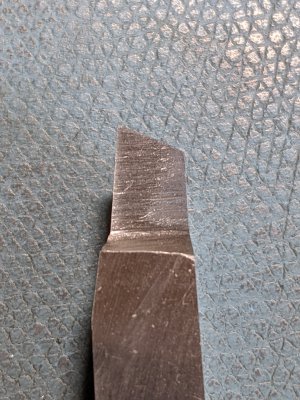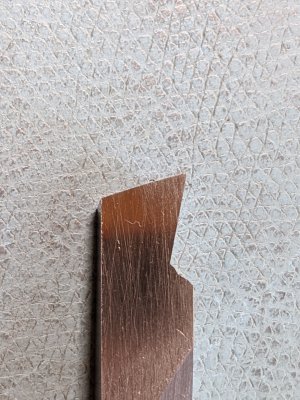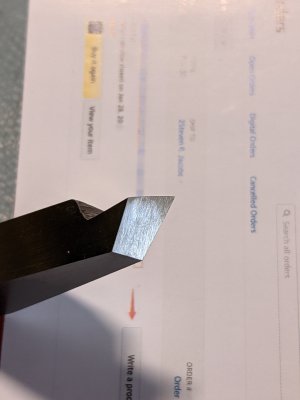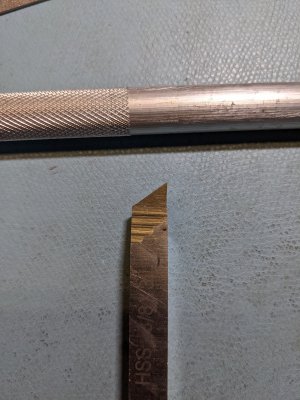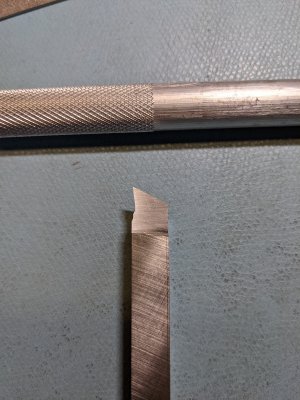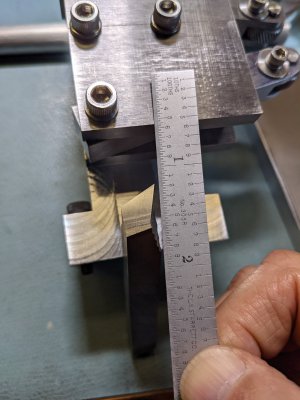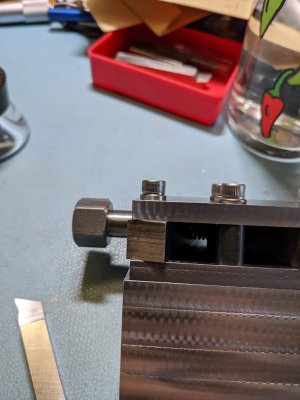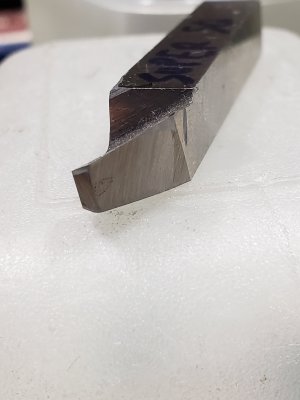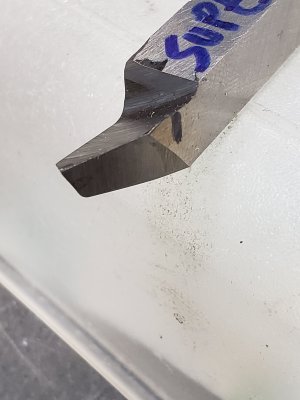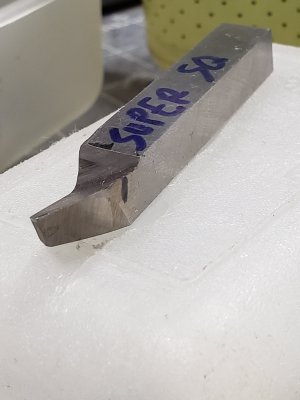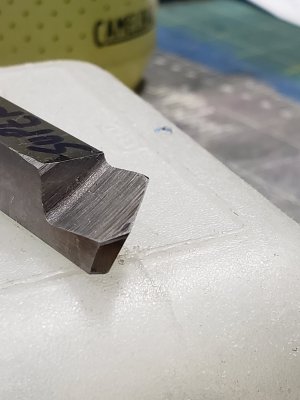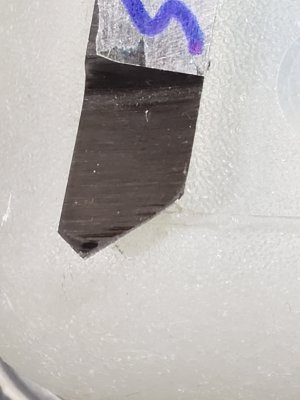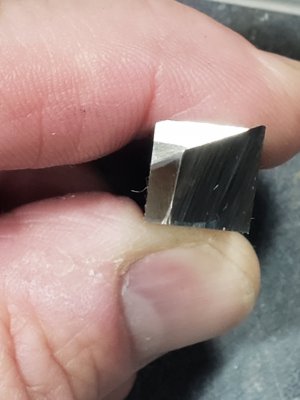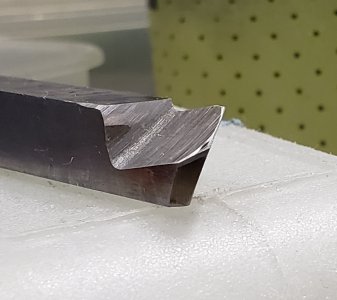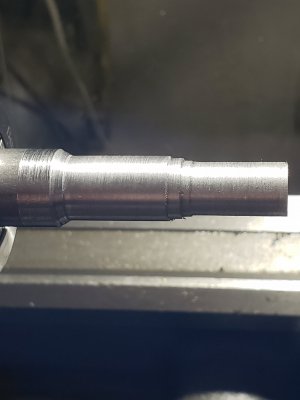Max RPM is 2300 on my mini-lathe. I don't run it that fast cutting! Mini-lathe just isn't rigid enough for that. The speed is electronically controlled, there are no belt positions to shift. I'm usually running near 650 RPM, but that all depends on lots of stuff, like diameter, and if there's chatter. If there's chatter then I back off. Got to confess, I tend to forget running the SFM calculation, but it's rare that I'm machining poor machining steel. There's allegedly a tach output connector on the lathe, but the display was wildly overpriced a year ago. Maybe I can make an Arduino read out the pulses and display it for a lot less.
DOC's are very modest only 0.010 to 0.015. I let the lathe tell me what it can do, so I don't push it beyond what it can do. This makes lathework kind of slow, but, that's what one gets with that entry price point. Gibs are adjusted to be relatively tight to minimize lifting and to maximize rigidity for the platform.
I seem not to be wearing carbide, it's more chipping. It could be a function of the quality of the inserts and the type. But this thread is about grinding tooling, so let's focus on that. More specifically the square tool. I haven't had an issue with my knife tools, left or right hand. Maybe that's because I only use them to shave off a thousandth or two. I have yet to crack the tip on the knife.
What do you mean by tool angles? The grinds themselves or the angle of the tool when on the lathe?
Here is a square tool that is in process, it's not completely finished. It's in HSS. I have not put a flat on the edge, nor radiused the edge. Honing is not complete, especially the small flat in the third picture.. The shape is representative of my other square tools. I will bring up the chipped cobalt one and photograph it as well. In my mind, thought the cobalt one came out better, but the photos will be the judge of that.
